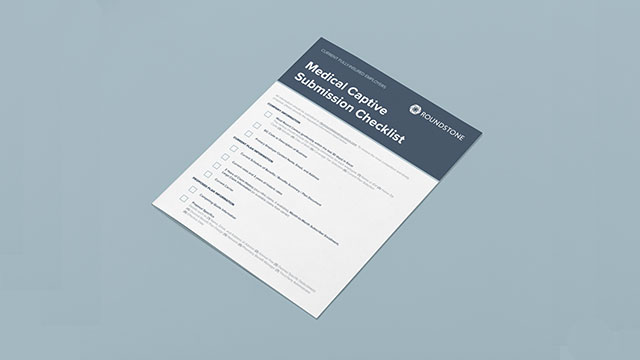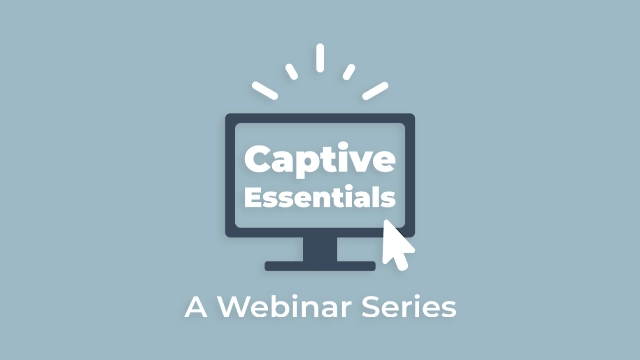Highlights
- Self-insured group captive medical insurance offers small to midsize businesses an affordable way to fight against rising healthcare system costs.
- As a benefits advisor and advocate for employers, you can help your clients by providing actionable tips and educational resources for saving money on healthcare costs.
- A self-funded group captive plan helps you to differentiate and offer clients a better alternative than the status quo.
Affordability is at the root of many problems facing small to midsize employers regarding their healthcare benefits. As a benefits advisor, it’s essential to expand your offerings to include self-funded group medical captive health insurance. Offering actionable steps and excellent educational resources can help them get the most out of their group captive plan at the lowest cost.
The Fight Against America’s Rising Healthcare and Insurance Costs
Times are tough for those covered by fully funded insurance. Partially due to the COVID pandemic, the number of high-dollar claims is rising fast. As insurance companies react to recoup those losses, premium costs are higher than they’ve ever been — $7,739 and $22,221 for single and family coverage, respectively.
The Kaiser Family Foundation reports that 46% of covered workers are enrolled in a PPO (Preferred Provider Organization) plan, while 28% are enrolled in a high-deductible plan, and the remainder of covered workers are in an HMO, POS, or indemnity plan. These plans typically feature premium increases each year and don’t allow for flexibility regarding plan design, network, or provider.
Under a high-deductible plan, covered members of an employer-sponsored plan must pay a high sum upfront before their insurance covers any medical care. The average deductible for single payers has climbed 13% in the past five years to $1,669, and is up 68% since 2011.
In addition to these issues, employers and employees often face the following when dealing with the health insurance system:
- Lack of transparency about the cost of services from providers
- Denial of coverage from their insurer
- Rising pharmacy costs for life-saving medication like insulin
- Insurance brokers steering them into costly insurance plans
- Pharmacy benefits managers (PBMs) who don’t pass on savings to employers
These issues are causing businesses and their employees to suffer the consequences of increasing costs and poorer-quality healthcare across the board.

Tips to Help Your Clients Win Against the Healthcare System with Self-Funded Insurance
To help your clients win the fight against the healthcare system, consider the following tips and solutions:
Move Your Clients to a Self-Funded Health Insurance Plan
First and foremost, your clients can save money by switching to a self-funded group captive plan. Group captive insurance allows employers to design their plans to meet employees’ specific needs and reduce premiums across the board.
When they move to a self-insured group captive plan with Roundstone, your clients should see savings in the form of refunded premiums year over year. Even in a year that saw the highest number of catastrophic claims for insurance companies, Roundstone gave back $10.5 million to group captive members in its annual distribution from unused premiums, highlighting a key cash flow benefit of using group captive insurance.
Make Sure They Know Their Rights
Make sure your clients know their healthcare rights. The No Surprises Act was passed in January of 2022 and guarantees certain protections for patients regarding healthcare billing. Out-of-network emergency providers can’t bill surprise sums, and all providers must explain costs before providing service.
The Affordable Care Act requires that all insurance providers offer coverage for mental health, substance abuse, and rehabilitative services. These services are necessary considering the rise in depression, anxiety, and substance use resulting from the COVID-19 pandemic.
Help Them Implement Out-of-the-Box Cost Containment Solutions
With self-insured group captive insurance, you can help your clients implement cost containment solutions that aren’t available with traditional insurance plans. Cost savings solutions include:
- Built-in plan incentives. For example, members who use high-cost services like the emergency department pay a higher copay, while those who choose telehealth have zero copays.
- Pass-through or transparent PBMs. Self-insured clients can use pharmacy benefits managers who pass the savings on rather than keeping them for themselves.
- Concierge care. Self-insured companies can use concierge care to address specific health issues like chronic conditions, and guide treatment before conditions become worse and result in unexpected and expensive emergency care.
- Direct primary care programs. Direct primary care programs offer self-insured members better access to their primary care providers for preventive health services.
- Employee well-being programs. Members can participate in employee well-being programs encouraging healthy eating, exercise, and stress reduction for better health (and better productivity).
- Centers of excellence. Members can access services like MRIs, scans, and scheduled, non-emergency procedures from centers of excellence, which provide low-cost, high-quality care rather than high-cost, low-quality care from major area hospitals or clinics.
Provide Clients with Educational Resources
As an advisor, you can help your clients with easy-to-understand education resources. An excellent way to do that is to provide their employees with the book Never Pay The First Bill by Marshall Allen. Allen spent 15 years as an investigative journalist in healthcare and is on a mission to help Americans fight against predatory insurance practices.
Allen was a keynote speaker at the 2022 Medical Captive Forum (MCF). In the fireside chat session, How Employers and Employees Can Beat the High Cost of Health Care Together, Marshall pointed out that one in five Americans has medical debt in collections. He attributes this statistic to rising costs of healthcare associated with wasteful spending in the form of price gouging, overtreatment, and administrative bloat.
“It’s like the movie Groundhog Day. This is like waking up every morning, every year, year after year . . . finding the same thing: more increases, more costs. It’s like the healthcare system has an entitlement complex.”
– Marshall Allen
The solution, according to Marshall, is for employers and employees to rise up. He adds that the healthcare system is ripe for disruption. Employers can play a leading role in the process by educating their employees that “you can save hundreds or thousands of dollars per healthcare interaction if you’re just savvy about the way you engage with the healthcare system.”
Clients can encourage their employees to sign up for Allen’s newsletter to learn tips and tricks for fighting back. Tips include knowing your right to appeal a denial, reviewing your itemized bill, and comparing costs for your procedures before deciding on a provider.
Encourage them to launch a monthly or quarterly internal newsletter that keeps healthcare economies top of mind for their workers. This is a great way to remind them that the benefits of being smart healthcare consumers will help keep their out-of-pocket costs as low as possible.
In the newsletter, employers might share resources like thought leadership articles and podcasts. Suggest a title like Healthcare Weekly, which discusses technology and healthcare. Alternatively, share a list of your favorite HR podcasts which touch on issues relating to employee health benefits.
One way that Roundstone is fighting back is by using Quantify to fight fraud and errors on claims, saving our clients over 3 million last year.

Roundstone’s Self-Funded Group Captive Medical Insurance: An Affordable Solution for Businesses and Employees
Roundstone’s self-funded group medical captive insurance is an affordable healthcare solution for small to midsize businesses and their employees.
As an advisor, you can work with your clients to educate them on the benefits of opting into a self-funded group captive plan, such as lower premiums, shared risk, and flexible plan design.
As a business owner, you can work with a trusted Roundstone advisor to discuss a group captive plan and the freedom it can give you and your employees regarding your healthcare decisions and costs.
Roundstone’s CSI Team and CSI Dashboard offer an unprecedented look at your healthcare data, allowing you to make real-time decisions that affect the cost of your coverage. When Roundstone, advisors, employers, and employees all work together, we can win the battle against big-name insurers.
Contact Roundstone today to learn about the benefits of a self-insured group captive plan and how it can help you win the fight against the current health insurance system.















